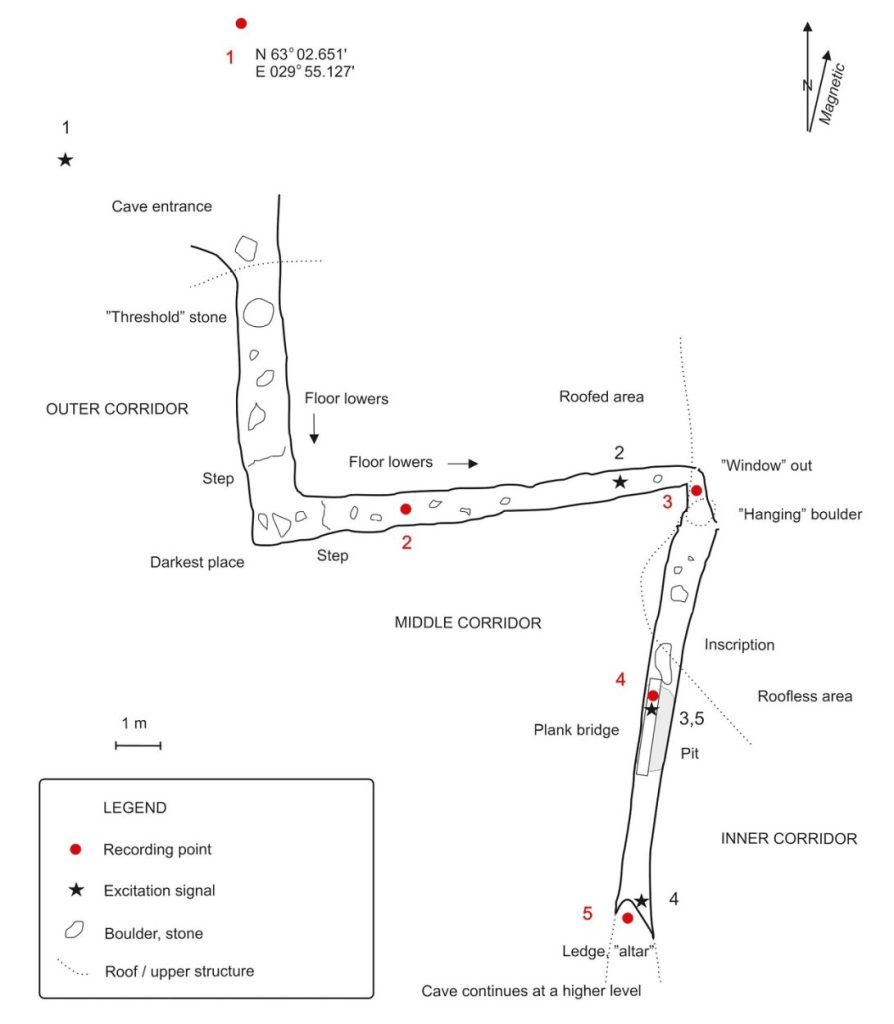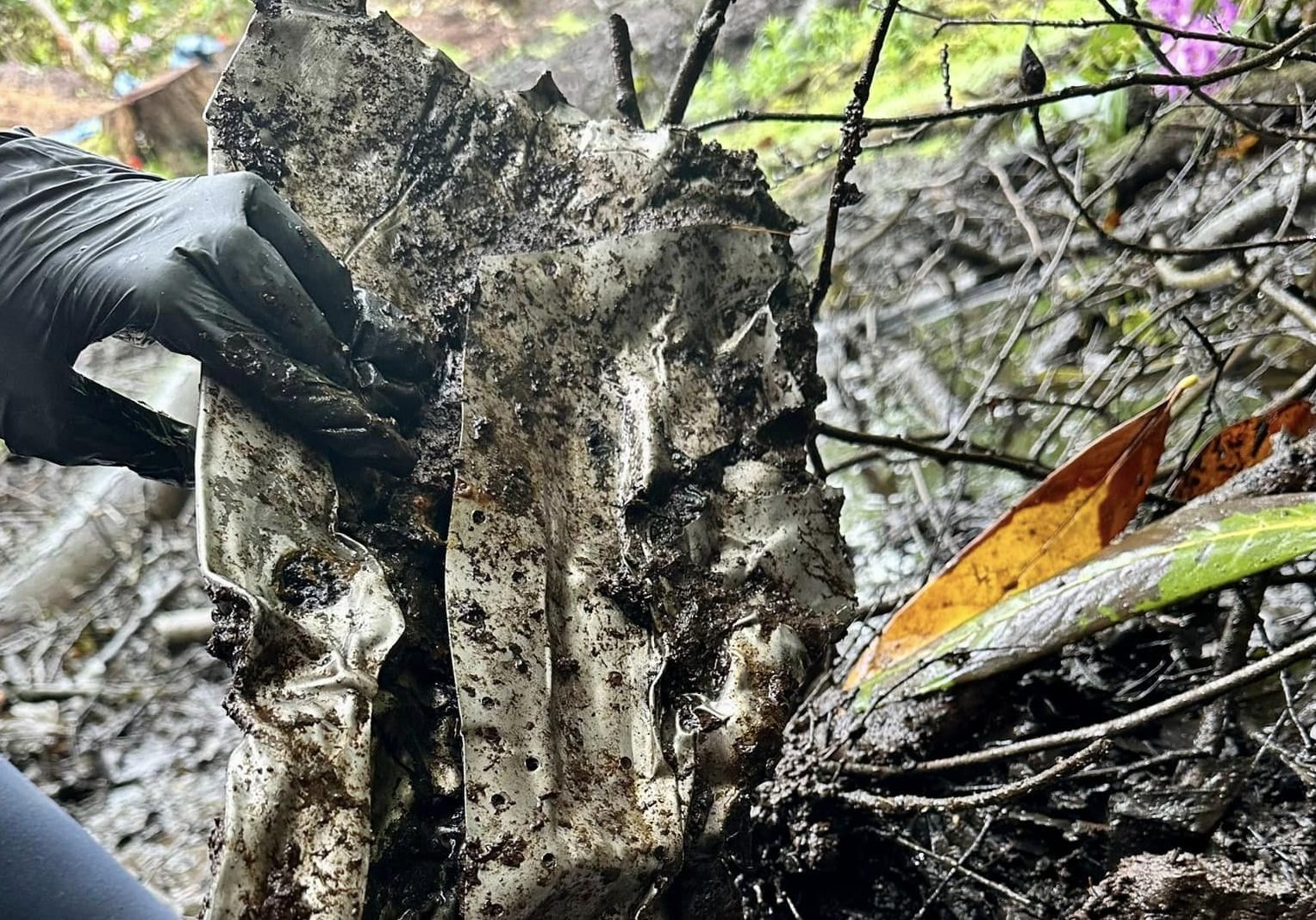Archaeology
“Witchcraft” is the result of acoustic resonance at the Devil’s Church

A team of archaeologists from the University of Eastern Finland have proposed that “witchcraft” at the Devil’s Church is the result of acoustic resonance.
The Devil’s Church, also known as Pirunkirkko, is a 34-metre-long crevice cave located in the Koli National Park, Finland. In the vicinity are several other caves referring to the devil, such as Pirunluola (“Devil’s Cave”), Pirunvaara (“Devil’s Mountain”), and Pirunkallio (“Devil’s Rock”).
For centuries, the Koli mountain range has been revered as a realm inhabited by spiritual entities. The peaks, named Ukko-Koli and Akka-Koli, pay homage to the pre-Christian thunder god and his consort, reflecting their significance in local mythology.
Archival sources from the Finnish Literature Society (SKS) tell of “mountain elves,” “invisible fairies,” and “great lords” that move in the area:
“The inhabitants of the mountain only play and yell there, and walk through the woods, and dance and play and drive with the bells along the mountain ravines. There’s a kind of crack where they play and walk. It is said that an iron road passes via the crack through the mountain of Koli, all the way from Taipale.”
Devil’s Church : Image Credit : University of Eastern Finland
According to tradition, the Devil’s Church was a meeting place for shamans known as tietäjä, velho, or noita, who came from Finnish and Karelian agricultural communities to contact the spirit world, heal the sick, and bring balance to people and nature.
The most famous shaman was Kinolainen, also called Tossavainen, who would gather “patients” in the cave to commune with the Devil to find the causes and cures of their ailments.
Modern shamans still carry on the tradition to this day, and like their historical counterparts, they use the unique acoustic properties of the cave during incantation and singing rituals. The sages also shouted, raged, jumped, kicked, and trembled, as if fighting with or intimidating invisible forces.
In a paper published in the De Gruyter Open Access journal by Riitta Rainio from the University of Helsinki, and Elina Hytönen-Ng from the University of Eastern Finland, the researchers investigate whether the cave acoustics could have played a role in the ritualisation of the Devil’s Church and the power of its rituals.
The study used an impulse response recording and spectrum analysis, revealing a distinct resonance phenomenon that amplifies and lengthens sound at a specific frequency. According to Rainio: “Acoustic measurements conducted in the corridor-like cave show a strong resonance phenomenon.”
“The phenomenon is caused by a standing wave between the smooth parallel walls, generating a tone at the natural frequency of the cave, 231 Hz, that stays audible for around one second after sharp impulses, such as clapping, drumming or loud bangs. Tones vocalised in the cave near the 231 Hz frequency are amplified and lengthened by the cave,” added Rainio.
According to the researchers, these particular acoustics and rituals are not solitary acts but are rather collaborative engagements with the physical surroundings and the natural environment. The reverberations facilitate a profound connection and exchange with a presence or entity beyond human, affirming their existence and signalling their active participation.
The study of acoustics also gives new tools for examining and understanding the religious beliefs and experiences reported in Pirunkirkko and similar places. In addition, the study illustrates how cultural frameworks of thought guide our sensory perceptions leading to different experiences and interpretations.
Header Image Credit : University of Eastern Finland
This content was originally published on www.heritagedaily.com – © 2023 – HeritageDaily
Archaeology
Archaeologists search crash site of WWII B-17 for lost pilot

Archaeologists from Cotswold Archaeology are excavating the crash site of a WWII B-17 Flying Fortress in an English woodland.
The B-17 Flying Fortress is an American four-engine heavy bomber aircraft developed in the 1930s for the United States Army Air Corps (USAAC).
The bomber was mainly used in the European theatre for daylight strategic bombing, complimenting the RAF Bomber Command’s night bombers in attacking German industrial, military and civilian targets.
Cotswold Archaeology have been tasked by the Defense POW / MIA Accounting Agency to search the crash site for the remains of the pilot, who died when the B-17 crashed following a system failure in 1944.
Image Credit : Cotswold Archaeology
At the time, the plane was carrying a payload of 12,000lbs of Torpex, an explosive comprised of 42% RDX, 40% TNT, and 18% powdered aluminium. Torpex was mainly used for the Upkeep, Tallboy and Grand Slam bombs, as well as underwater munitions.
The pilot was declared MIA when the plane exploded into an inferno, however, using modern archaeological techniques, the researchers plan to systematically excavate and sieve the waterlogged crash site to recover plane ID numbers, personal effects, and any surviving human remains.
It is the hope of the excavation team members that they will be able to recover the pilot’s remains and return him to the United States for burial with full military honours.
The Defense POW/MIA Accounting Agency (DPAA) is an agency within the U.S. Department of Defense whose mission is to recover unaccounted Department of Defense personnel listed as prisoners of war (POW) or missing in action (MIA) from designated past conflicts.
Header Image Credit : Cotswold Archaeology
Sources : Cotswold Archaeology
This content was originally published on www.heritagedaily.com – © 2023 – HeritageDaily
Archaeology
Roman Era tomb found guarded by carved bull heads
Archaeologists excavating at the ancient Tharsa necropolis have uncovered a Roman Era tomb guarded by two carved bull heads.
Tharsa is located near Kuyulu village in southeastern Turkey along the Adıyaman-Şanlıurfa Highway.
The site was situated on a major Roman highway from Doliche to Samosata, which today consists of a two settlement mounds and a large necropolis that dates from the 3rd century to the Byzantine period.
Excavations first commenced in 2021 which discovered a collection of Turuş Rock Tombs, a type of tomb construction carved directly into the bedrock.
In the latest season, archaeologists have excavated another Turuş Rock Tomb, however, this example was found to have two carved bull heads which is decorated with garlands and rosettes between the horns.
Bull heads, known as Bucranium, were a form of carved decoration commonly used in Classical architecture. In Ancient Rome, bucrania were often used on the friezes of temples in the Doric order of architecture, later influencing the architecture of buildings from the Renaissance, Baroque, and Neoclassical periods.
Architectural examples of bucrania are representations of the practice of displaying garlanded, sacrificial oxen, whose heads were displayed on the temple walls.
Like similar Turuş Rock Tombs, the bull heads are carved directly into the bedrock, guarding a dozen rock cut steps descending into the burial chamber which has three arched niches known as acrosolia.
Mustafa Çelik, Deputy Director of Adıyaman Museum, said, “Tharsa Ancient City consists of 3 main archaeological areas: Big Mound, Small Mound and Necropolis Area. We started excavations in the necropolis area in 2024. We added 2 more rock tombs to the rock tombs we had previously uncovered. One of them is the rock tomb we identified today.”
Header Image Credit : Adıyaman Museum
Sources : Adıyaman Museum
This content was originally published on www.heritagedaily.com – © 2023 – HeritageDaily
-

 Ghosts2 years ago
Ghosts2 years agoZozo: The Ouija Board Demon
-

 Space2 years ago
Space2 years agoScientists claim to have found the answer what existed before the Universe
-

 Ghosts2 years ago
Ghosts2 years agoOld Coot of Mount Greylock
-
Archaeology1 year ago
New discoveries at Ekʼ Balam during conservation works
-

 General3 years ago
General3 years agoUC San Francisco engaging in horrifying experiments, organ harvesting of live babies in the name of “science”
